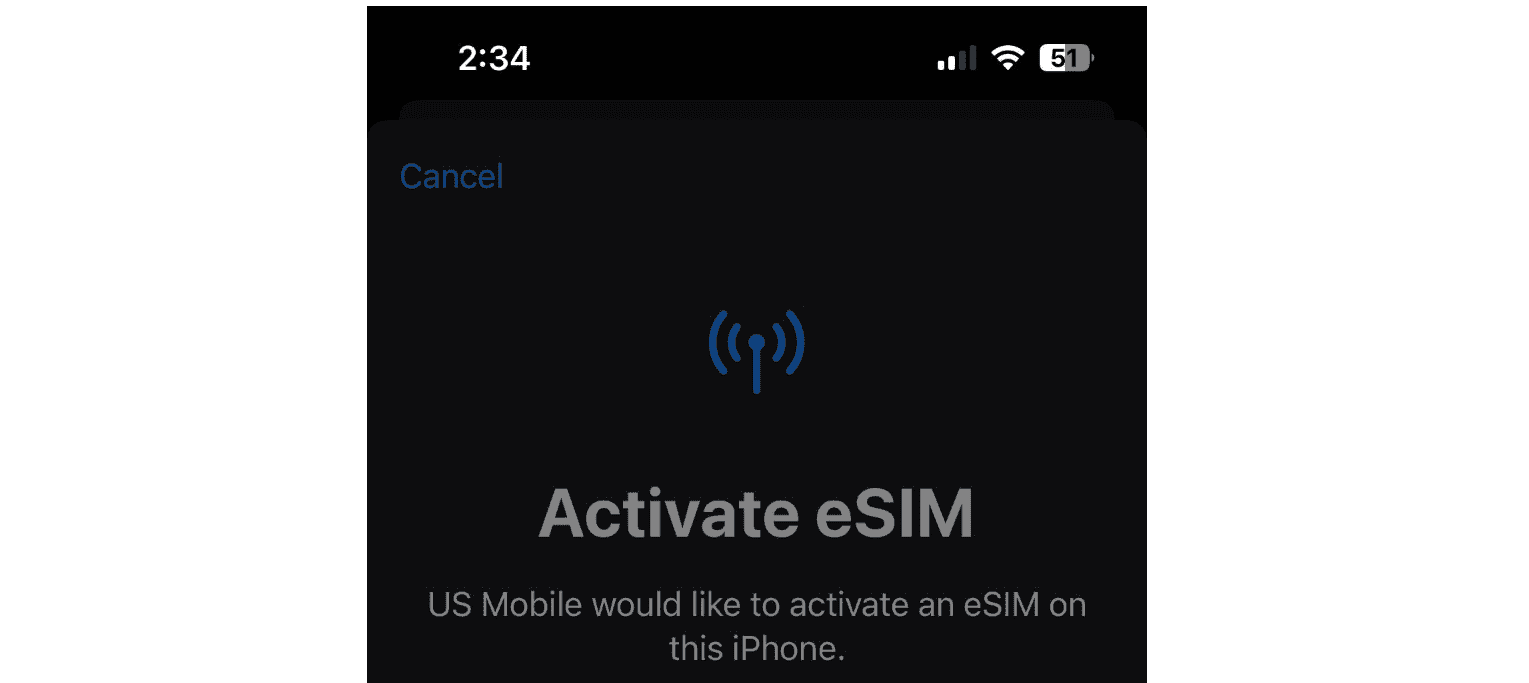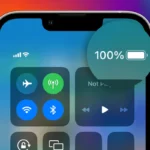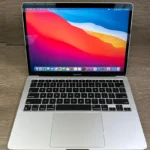Many iPhone users embrace the flexibility of having multiple phone numbers on a single device. The introduction of eSIM technology has made this possible without the need for multiple physical SIM cards. An eSIM or embedded SIM is a digital SIM that allows users to activate a mobile plan without a physical nano-SIM. Apple has integrated this technology into its devices starting with the iPhone XS and XR models, allowing the use of dual SIMs – one physical nano-SIM and one eSIM.
Setting up an eSIM is straightforward. On iPhones running the latest iOS, carriers typically provide a QR code that, when scanned, activates the plan. Some carriers even offer apps where the eSIM can be activated with few taps. The eSIM not only saves space inside the phone but also offers a more secure alternative to traditional SIM cards as it’s not easily removable.
Which iPhones Have eSIM
eSIM technology allows you to activate a cellular plan without a physical SIM card, offering flexibility for dual-SIM use, international travel, and easier carrier switching. If you’re considering an iPhone with eSIM capabilities, here’s a clear guide to help you understand which models support eSIM, their features, and how to use it.
What Is eSIM?
An eSIM (embedded SIM) is a digital SIM embedded inside your iPhone that lets you activate a cellular plan without needing a physical SIM card. This means:
- Use multiple cellular plans on one device (dual SIM)
- Easily switch between carriers without swapping SIM cards
- Convenient for international travel with local plans
Which iPhones Support eSIM in 2025?
Apple has progressively expanded eSIM support since its introduction. As of 2025, the following iPhone models are compatible with eSIM:
- iPhone XS, XS Max, and XR (first generation with eSIM support)
- iPhone 11, 11 Pro, and 11 Pro Max
- iPhone SE (2nd generation and later)
- iPhone 12 mini, 12, 12 Pro, and 12 Pro Max
- iPhone 13 mini, 13, 13 Pro, and 13 Pro Max
- iPhone 14, 14 Plus, 14 Pro, and 14 Pro Max
- iPhone 15 series (all models)
- iPhone 16 series (all models)
Note: Starting with iPhone 14 models sold in the U.S., Apple removed the physical SIM tray entirely, relying solely on eSIM for cellular connectivity.
For a full and detailed list of eSIM-compatible iPhones, you can refer to this comprehensive 2025 guide.
Key Features of eSIM on iPhones
- Dual SIM Dual Standby (DSDS): Use one physical SIM and one eSIM simultaneously, or two eSIMs on newer models without a physical SIM.
- Multiple Profiles: Store multiple eSIM profiles but only one active at a time (varies by model).
- Easy Carrier Switching: Download and activate new plans without visiting a store or swapping SIM cards.
- Travel Friendly: Add local plans abroad without removing your home SIM.
How to Use eSIM on Your iPhone
- Check Carrier Support: Ensure your carrier supports eSIM activation.
- Get an eSIM QR Code or Activation Code: Your carrier will provide this.
- Go to Settings > Cellular > Add Cellular Plan: Scan the QR code or enter details manually.
- Label Your Plans: Assign names to distinguish between plans (e.g., Personal, Work).
- Select Default Line and Data Line: Choose which plan to use for calls, SMS, and data.
Advantages of eSIM on iPhones
- No need to handle physical SIM cards.
- Seamless switching between carriers and plans.
- Supports multiple lines on one device.
- Enables fully digital cellular setup.
Conclusion
If you want the flexibility of multiple lines, easier carrier management, or plan to travel internationally, iPhones with eSIM support are an excellent choice. From the iPhone XS onward, Apple has steadily improved this feature, with the latest iPhone 16 series fully embracing eSIM technology.
Key Takeaways
- eSIM technology allows multiple phone numbers on a single device.
- iPhones from XS and XR onwards support eSIM.
- eSIM setup is user-friendly and increasingly secure.
eSIM Technology and Setup
eSIM stands for Embedded Subscriber Identity Module. Unlike physical SIM cards, an eSIM is built into your iPhone, allowing you to use carrier services without a physical SIM.
Understanding eSIM
An eSIM in an iPhone is a digital SIM that allows users to activate a cellular plan without using a nano-SIM. iPhone models starting from the iPhone XS and XR series include this feature, with the newer iPhone 14 models supporting two active eSIMs. Dual SIM functionality is also available by using one physical SIM and one eSIM together.
How to Set Up eSIM on iPhone
To set up eSIM on an iPhone, one needs to go to the Settings app and follow the steps provided by the device. On iPhones with iOS 16 or later, the process is even simpler with an eSIM Quick Transfer feature. This allows users to transfer their SIM information from an old iPhone to a new one easily.
Steps to set up eSIM:
- Go to Settings on your iPhone.
- Tap on Cellular or Mobile Data.
- Choose “Add Cellular Plan”.
- The iPhone camera opens to scan the QR code from the carrier for eSIM activation.
Activating eSIM with Carrier Support
For carrier support of eSIM activation, the user might download the carrier’s app or use a carrier-authorized QR code. This is done through the Settings app, where the new eSIM option will appear. It’s important to ensure that the device’s software is up to date and that the network provider has eSIM support for the particular iPhone model.
iPhone Models with eSIM Support
Apple’s integration of eSIM technology in iPhones allows users to activate a cellular plan without a physical nano-SIM card. Not all iPhone models support eSIM, and this section provides a list of those that do.
eSIM-Compatible iPhone Models
The iPhone models that support eSIM begin with the iPhone XS, iPhone XS Max, and iPhone XR series. Following these, the entire iPhone 13 lineup, which includes the iPhone 13, iPhone 13 Mini, iPhone 13 Pro, and iPhone 13 Pro Max, also come with eSIM compatibility. Most recently, the iPhone 14 series, encompassing the iPhone 14, iPhone 14 Plus, iPhone 14 Pro, and iPhone 14 Pro Max, support eSIM and in some cases, do not have a physical SIM tray. These newer models may use dual eSIM, allowing two eSIM profiles to be active at the same time.
- iPhone XS
- iPhone XS Max
- iPhone XR
- iPhone 13
- iPhone 13 Mini
- iPhone 13 Pro
- iPhone 13 Pro Max
- iPhone 14
- iPhone 14 Plus
- iPhone 14 Pro
- iPhone 14 Pro Max
Using Dual SIM and eSIM
iPhones that support eSIM also feature Dual SIM capabilities. This means users can have two different phone numbers or plans on a single device. This is particularly useful for travel or for separating work and personal calls. The iPhone 13 and iPhone 14 series can maintain active plans on both a physical SIM and an eSIM simultaneously. Specific models from the iPhone 13 series onward even allow for the use of two active eSIMs at the same time, a step up in terms of flexibility compared to the older models.







